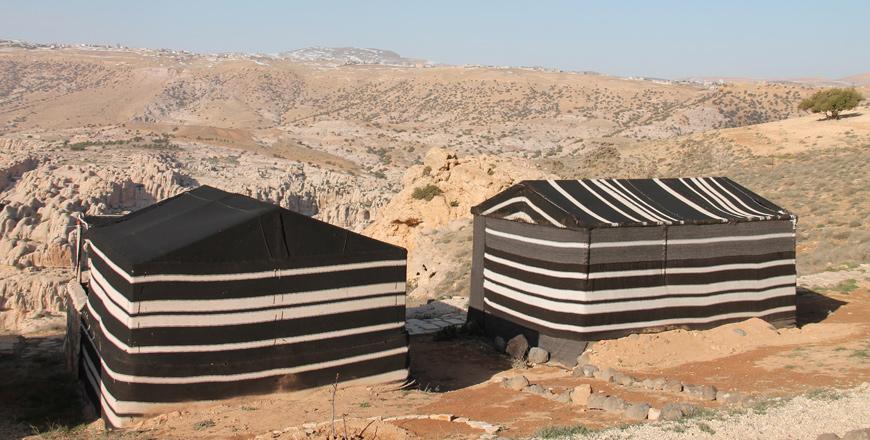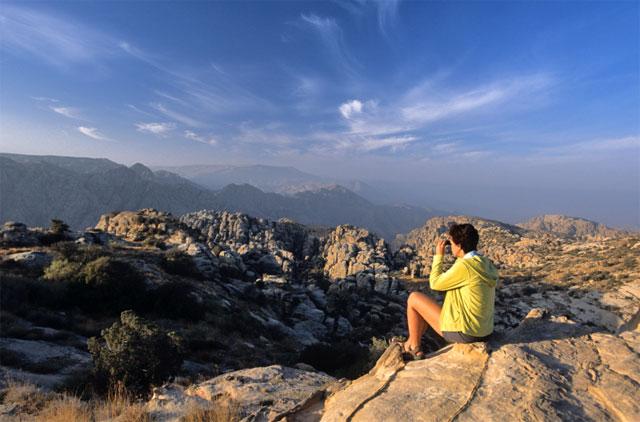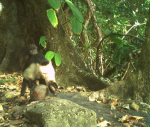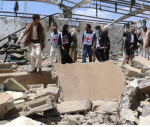You are here
Experts call for independent study into environmental impact of copper mining in Dana
By Mohammad Ghazal - May 14,2018 - Last updated at May 15,2018

Copper reserves are distributed in two areas in Dana that are called Kherbet Nohas-Wadi Jarieh and Finan (Photo by Camille Dupire)
AMMAN — Conducting comprehensive and independent studies to determine the economic feasibility and the environmental and ecological impact on mining copper in Dana area is key to making a decision on whether to go ahead with the projects, experts said on Monday.
They stressed that any copper mining activities need to preserve the environment first, while taking into account mitigation measures and the uniqueness of the ecological features of the area.
“Copper reserves in Dana are huge and the economic benefits for mining copper in the area are immense, according to some non-comprehensive studies conducted over the past years,” Maher Hijazin, energy consultant and former director general of the Natural Resources Authority, said during an event held by EDAMA Association on Monday.
Copper reserves are distributed in two areas in Dana that are called Kherbet Nohas-Wadi Jarieh and Finan area, according to Hijazin, who said studies estimate the copper reserve in Kherbet Nohas-Wadi Jarieh at about 600,000 metric tonnes, worth $3.25 billion at the current price of copper of around $7,000 per tonne.
In Finan area, the reserve is estimated to be around 272,000 tonnes at a total value of $1.5 billion.
“According to these initial figures, mining copper has many economic benefits for the country and the local communities… But there is also a need for a comprehensive independent study to highlight the feasibility of the project,” he said.
Minister of Environment Nayef Al Fayez said that the ministry will not hesitate to support any mining project, especially in Dana area, if it was proven to be economically feasible in terms of numbers and environment conservation, the Jordan News Agency, Petra, reported.
Fayez said that the government is the main player in enforcing the measures to mitigate the effects of mining in the Dana Reserve, but it is not the sole responsible entity, referring to the role of the private sector, and stressing that the Dana Reserve is particularly important, which requires understanding the real value of mining and the government’s duty to support local communities in the south.
Jordan imports some 20,000 to 25,000 tonnes of copper per year at a value of $150 million to $200 million, he said, citing several studies.
Hijazin added that preserving the environment and ecological features of Dana while still benefiting from the large reserve of copper is possible.
Manaseer Group announced in March that it had started exploration for copper and associated minerals in Dana reserve, earmarking $600 million for the two-year project that will cover over 106sq.km.
A subsidy of the group, the Jordanian Integrated Company, will handle the project, the company said, indicating that the commencement of the plan came two years after Manaseer Group signed a memorandum of understanding (MoU) with the Ministry of Energy and Mineral Resources, giving the company the licence to carry out copper mining in the reserve.
The MoU stipulates that the company “strictly adheres to environmental aspects throughout the mining process”, including an excavation plan, conducting studies and collecting geochemical samples, and ensuring that all precautionary measures to protect the environment are enlisted in the mining mechanism in accordance with the highest international standards, according to the Ministry of Energy and Mineral Resources’ website.
The MoU also “requires the investor [Manaseer] to rehabilitate extra land plots to be encompassed in the reserve”, according to the website.
Spread over 330 sq.km, the reserve is located in Tafileh Governorate, 180km southwest of the capital. Dana is Jordan’s largest and most diverse nature reserve with 833 types of vegetation, constituting 50 per cent of the total flora of the country.
The nature reserve is globally important for being the southernmost remaining forest community of pencil pine and for containing three rare plants that exist only in Dana and are named after the area: Silenedanaeansis, Micromeriadanaensis and Rubiadanaeansis.
Dana is also an important bird-watching site, as it is home to 216 kinds of birds — many of which are globally threatened — and 38 mammals.
Royal Society for the Conservation of Nature (RSCN) Chairman Khaled Irani stressed that “mining is important, but not in such beautiful and protected” areas.
Mining copper in Dana reserve has been a longstanding issue rejected by environmentalists who claim that mining activities will harm the unique ecosystem of the reserve, established and managed by the Royal Society RSCN since 1989.
“The area is very unique and the ecological projects in the area created more than 100 jobs, which benefitted local communities,” said Irani during the event.
“We are not against mining, but we want independent environmental and ecological studies… We want an independent entity to determine the economic feasibility and the losses that will occur to nature and the ecological system,” said Irani.
Minister of Environment Nayef Fayez said it was important to “be realistic in this regard”.
“We need to see what the real value here of mining copper at the same time we need to preserve the natural reserve in Dana… We have to be realistic and assess the whole scheme,” he said.
“It is also important not to raise expectations at the same time,” said Fayez.
Related Articles
AMMAN — Results of an ongoing exploration programme of copper and associated minerals in Dana Biosphere Reserve will determine whether minin
AMMAN — Manaseer Group, a local energy and mining giant, has started exploration for copper and associated minerals in Dana Reserve, earmark
AMMAN — The Royal Society for the Conservation of Nature (RSCN) disapproves of the government’s decision to commission the Ministry of Envir

















